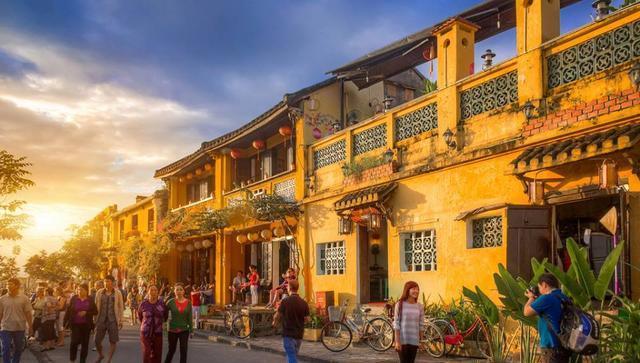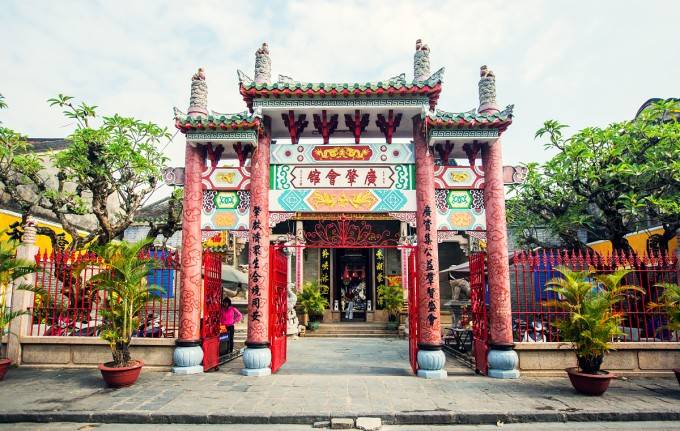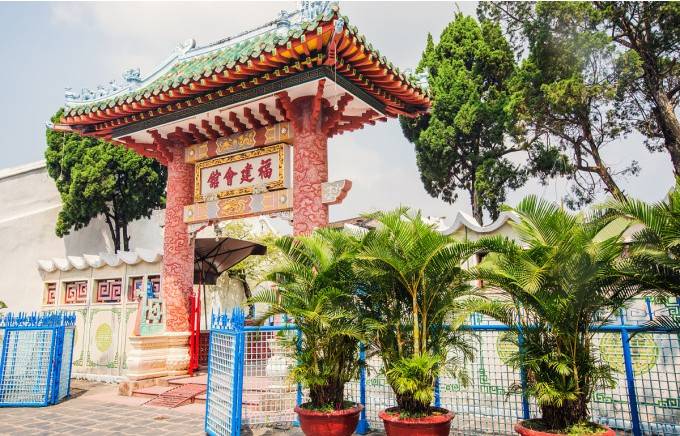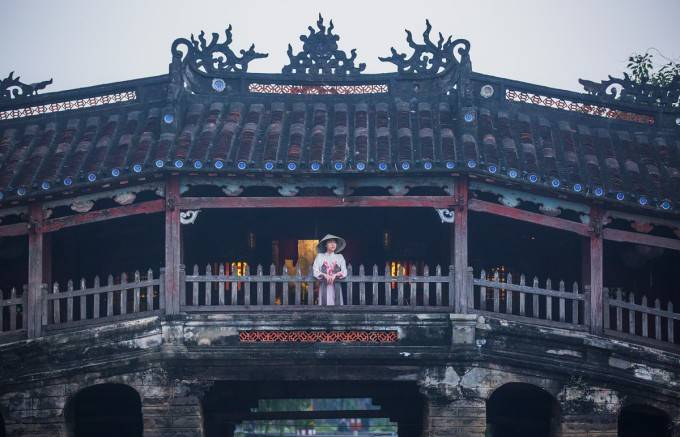Guangzhao Guild Hall
It is said that the Guangzhao Guild Hall was built in 1786, with all construction materials collected and made in Guangdong and then transported to Hoi An for assembly. The architectural style of the hall is very characteristic of Chinese culture, with the patterns on the archway mainly decorated with dragon and phoenix themes, and the color scheme dominated by the Chinese favorite, bright red. The main deity of the hall is Guan Yu, and on both sides of the entrance are painted scenes of the Oath of the Peach Garden and Guan Yu's journey to escort his sister-in-law. As you step inside the hall, you will find dragon images everywhere, with various dragon-shaped pillars vividly depicted. The dragon-shaped ceramic pool in the courtyard is considered the essence of the hall, showcasing exquisite craftsmanship. In the innermost courtyard, there is also a familiar sculpture—the Five Rams Statue of Guangzhou. Although it is a miniature version, it is in no way inferior to the original in terms of form and craftsmanship.
Fujian Assembly Hall
The Fujian Assembly Hall, also known as Jinshan Temple, is one of the most important assembly halls for the Chinese community in Hoi An. Built in 1697 by Fujian merchants, the hall serves as a significant gathering place for overseas Chinese. Inside, it enshrines Mazu, with Qianliyan and Shunfeng'er on either side. The hall is renowned for its colorful decorations and well-preserved statues. Notably, the pond inlaid with porcelain pieces features a carp symbolizing 'leaping over the dragon gate,' accompanied by traditional Chinese auspicious symbols such as dragons, qilins, and phoenixes. The hall is filled with incense, with numerous spiral incense coils hanging inside, fully reflecting the faith and devotion of the Fujian people.
Chinese Assembly Hall
The Chinese Assembly Hall is one of the earliest established Chinese community halls, serving as a common place for local Chinese and bearing the important responsibility of inheriting and developing Chinese culture. Entering the courtyard of the hall, you can see two rows of bonsai, with the highest flower pots on either side of the door inscribed with 'Public Ownership, Public Governance, Public Enjoyment' and 'Nation, Civil Rights, Livelihood'. The white walls of the hall are marked with the striking red characters 'Propriety, Justice, Integrity, Honor'. The front features the red 'Tianhou Palace', which enshrines Mazu, a traditional Chinese deity, along with Guanyin Bodhisattva and Caibo Xingjun, reflecting the rich characteristics of Chinese culture.
Japanese Covered Bridge
Over the years, the Japanese Covered Bridge has experienced wear and tear from natural and man-made influences, causing the wooden planks and paint to fade and peel, giving it a weathered appearance. Although the bridge is not very spacious, it was originally built by the Japanese and later rebuilt by the Chinese during the Ming Dynasty, hence its architectural style predominantly features Chinese characteristics.











